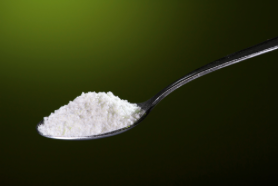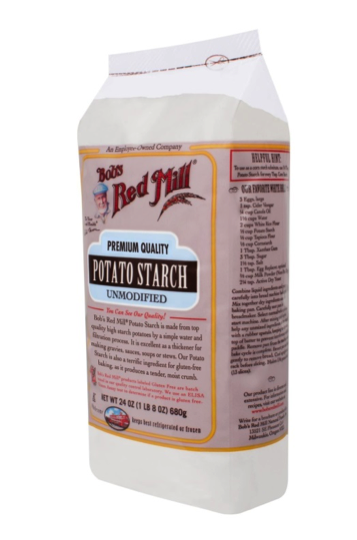[fusion_builder_container hundred_percent=”no” equal_height_columns=”no” hide_on_mobile=”small-visibility,medium-visibility,large-visibility” background_position=”center center” background_repeat=”no-repeat” fade=”no” background_parallax=”none” parallax_speed=”0.3″ video_aspect_ratio=”16:9″ video_loop=”yes” video_mute=”yes” border_style=”solid”][fusion_builder_row][fusion_builder_column type=”1_1″ layout=”1_1″ background_position=”left top” background_color=”” border_size=”” border_color=”” border_style=”solid” border_position=”all” spacing=”yes” background_image=”” background_repeat=”no-repeat” padding_top=”” padding_right=”” padding_bottom=”” padding_left=”” margin_top=”0px” margin_bottom=”0px” class=”” id=”” animation_type=”” animation_speed=”0.3″ animation_direction=”left” hide_on_mobile=”small-visibility,medium-visibility,large-visibility” center_content=”no” last=”no” min_height=”” hover_type=”none” link=””][fusion_text columns=”” column_min_width=”” column_spacing=”” rule_style=”default” rule_size=”” rule_color=”” class=”” id=””]
After fat in the ‘80s, carbohydrates have also had their fair share of time in the media spotlight, with the need or health benefit of carbohydrates being heavily debated. Although no carbohydrate is categorically “bad” and all types or sources can have their place in a healthy, balanced diet, it is resistant starch which defiantly comes towards the top of the list for providing health benefits.
 Several studies have researched the benefits of Resistant Starch in humans; with these benefits including weight loss, improved insulin sensitivity, gut health, digestion and reduced appetite. Best of all, you can take your favourite starchy carbohydrates and increase their resistant starch content simply by following a few clever tricks which we will discuss below!
Several studies have researched the benefits of Resistant Starch in humans; with these benefits including weight loss, improved insulin sensitivity, gut health, digestion and reduced appetite. Best of all, you can take your favourite starchy carbohydrates and increase their resistant starch content simply by following a few clever tricks which we will discuss below!
- PREP PREP PREP!
Preparing your food carbohydrate foods in advance and allow it to cool will increase the resistant starch content of foods such as oats, potato, rice, pasta, beans. Overnight oats is a tasty way to get a ton of resistant starch!
- SIMPLE SUPPLEMENTATION

One simple and cheap Resistant Starch supplement to add to your next order on Amazon is Bob’s Red Mill unmodified potato starch. It costs less than $10 it will give you about 100 servings! A small amount, around 10g can be added to your favourite foods without altering the taste of texture, this includes shakes, smoothies, yogurts and sauces.
What health benefits could resistant starch provide?
- It increases satiety and reduces food intake over a 24 hour period!
- Reduces fasting blood glucose, an important marker of health and disease.
- Controls blood sugar after a meal, which can help with energy and satiety.
- Improves gut function and health, which is linked to a ton of diseases and closely linked to your body composition.
- Improves insulin sensitivity, key for health, nutrient portioning, gaining muscle and staying lean
- Enhanced nutrient absorption from food, so it actually helps process and digest key nutrients such as magnesium and calcium.
- Reduces the risk of certain diseases and cancers.
- Reduces the risk of diabetes and improves glycemic control
- Reduces the energy density of the diet, key for weight loss and long term weight maintenance.
- Enhances fat burning, via several mechanisms mentioned above!
If you don’t already, focus on eating more resistant starch based foods or add it into your diet via supplementation. While it may not sound as sexy as half the supplements in your cupboard, it likely provides more benefits and has an overwhelming amount of research to support it!
Guest post by Rudy Mawer
If you want to read more on this topic, you can view a recent article by Rudy over on the T nation site, check it out now!
References:
- Englyst, H. N., & Cummings, J. H. (1985). Digestion of the polysaccharides of some cereal foods in the human small intestine. The American journal of clinical nutrition, 42(5), 778-787.
- Birt, D. F., Boylston, T., Hendrich, S., Jane, J. L., Hollis, J., Li, L., … & Whitley, E. M. (2013). Resistant starch: promise for improving human health. Advances in Nutrition: An International Review Journal, 4(6), 587-601.
- Thompson, D. B. (2000). Strategies for the manufacture of resistant starch. Trends in Food Science & Technology, 11(7), 245-253.
- Willis, H. J., Eldridge, A. L., Beiseigel, J., Thomas, W., & Slavin, J. L. (2009). Greater satiety response with resistant starch and corn bran in human subjects. Nutrition Research, 29(2), 100-105.
- Bodinham, C. L., Frost, G. S., & Robertson, M. D. (2010). Acute ingestion of resistant starch reduces food intake in healthy adults. British Journal of Nutrition, 103(06), 917-922.
- Bjørnholt, J. V., Erikssen, G. U. N. N. A. R., Aaser, E., Sandvik, L. E. I. V., Nitter-Hauge, S. I. G. U. R. D., Jervell, J., … & Thaulow, E. R. I. K. (1999). Fasting blood glucose: an underestimated risk factor for cardiovascular death. Results from a 22-year follow-up of healthy nondiabetic men. Diabetes care, 22(1), 45-49.
- Kendall, C. W., Esfahani, A., Sanders, L. M., Potter, S. M., & Vidgen, E. (2010). The effect of a pre-load meal containing resistant starch on spontaneous food intake and glucose and insulin responses. J Food Technol, 8, 67-73.
- Brighenti, F., Benini, L., Del Rio, D., Casiraghi, C., Pellegrini, N., Scazzina, F., … & Vantini, I. (2006). Colonic fermentation of indigestible carbohydrates contributes to the second-meal effect. The American journal of clinical nutrition, 83(4), 817-822.
- Raben, A., Tagliabue, A., Christensen, N. J., Madsen, J., Holst, J. J., & Astrup, A. (1994). Resistant starch: the effect on postprandial glycemia, hormonal response, and satiety. The American journal of clinical nutrition, 60(4), 544-551.
- Alexander, D. (2012). Postprandial effects of resistant starch corn porridges on blood glucose and satiety responses in non-overweight and overweight adults.
- Ludwig, D. S. (2002). The glycemic index: physiological mechanisms relating to obesity, diabetes, and cardiovascular disease. Jama, 287(18), 2414-2423.
- Guarner, F., & Malagelada, J. R. (2003). Gut flora in health and disease. The Lancet, 361(9356), 512-519.
- Jumpertz, R., Le, D. S., Turnbaugh, P. J., Trinidad, C., Bogardus, C., Gordon, J. I., & Krakoff, J. (2011). Energy-balance studies reveal associations between gut microbes, caloric load, and nutrient absorption in humans. The American journal of clinical nutrition, 94(1), 58-65.
- Johnston, K. L., Thomas, E. L., Bell, J. D., Frost, G. S., & Robertson, M. D. (2010). Resistant starch improves insulin sensitivity in metabolic syndrome. Diabetic Medicine, 27(4), 391-397.
- Kelley, D. E., Goodpaster, B., Wing, R. R., & Simoneau, J. A. (1999). Skeletal muscle fatty acid metabolism in association with insulin resistance, obesity, and weight loss. American Journal of Physiology-Endocrinology And Metabolism, 277(6), E1130-E1141.
- Robertson, M. D., Bickerton, A. S., Dennis, A. L., Vidal, H., & Frayn, K. N. (2005). Insulin-sensitizing effects of dietary resistant starch and effects on skeletal muscle and adipose tissue metabolism. The American journal of clinical nutrition, 82(3), 559-567.
- Schulz, A., Van Amelsvoort, J. M., & Beynen, A. C. (1993). Dietary native resistant starch but not retrograded resistant starch raises magnesium and calcium absorption in rats. The Journal of nutrition, 123(10), 1724-1731.
- Higgins, J. A., & Brown, I. L. (2013). Resistant starch: a promising dietary agent for the prevention/treatment of inflammatory bowel disease and bowel cancer. Current opinion in gastroenterology, 29(2), 190-194.
- Shen, L., Keenan, M. J., Raggio, A., Williams, C., & Martin, R. J. (2011). Dietary‐resistant starch improves maternal glycemic control in Goto–Kakizaki rat. Molecular nutrition & food research, 55(10), 1499-1508.
- Nugent, A. P. (2005). Health properties of resistant starch. Nutrition Bulletin, 30(1), 27-54.
- Keenan, M. J., Zhou, J., McCutcheon, K. L., Raggio, A. M., Bateman, H. G., Todd, E., … & Hegsted, M. (2006). Effects of Resistant Starch, A Non‐digestible Fermentable Fiber, on Reducing Body Fat. Obesity, 14(9), 1523-1534.
- Zhou, J., Martin, R. J., Tulley, R. T., Raggio, A. M., McCutcheon, K. L., Shen, L., … & Keenan, M. J. (2008). Dietary resistant starch upregulates total GLP-1 and PYY in a sustained day-long manner through fermentation in rodents. American Journal of Physiology-Endocrinology and Metabolism, 295(5), E1160-E1166.
- Rolls, B. J., Roe, L. S., & Meengs, J. S. (2004). Salad and satiety: energy density and portion size of a first-course salad affect energy intake at lunch. Journal of the American Dietetic Association, 104(10), 1570-1576.
- Yao, M., & Roberts, S. B. (2001). Dietary energy density and weight regulation. Nutrition reviews, 59(8), 247-258.
- Elfhag, K., & Rössner, S. (2005). Who succeeds in maintaining weight loss? A conceptual review of factors associated with weight loss maintenance and weight regain. Obesity reviews, 6(1), 67-85.
- Murphy, M. M., Douglass, J. S., & Birkett, A. (2008). Resistant starch intakes in the United States. Journal of the American Dietetic Association, 108(1), 67-78.
[/fusion_text][/fusion_builder_column][/fusion_builder_row][/fusion_builder_container]